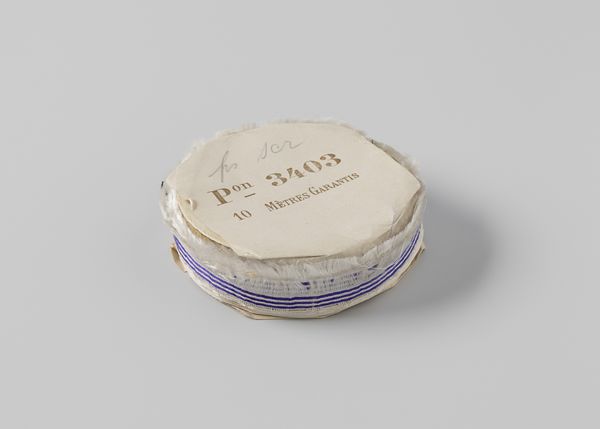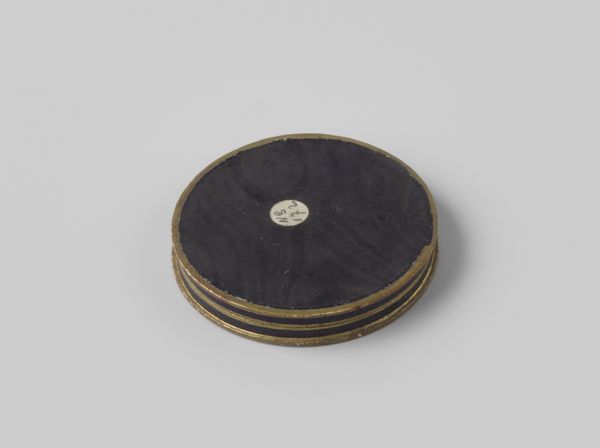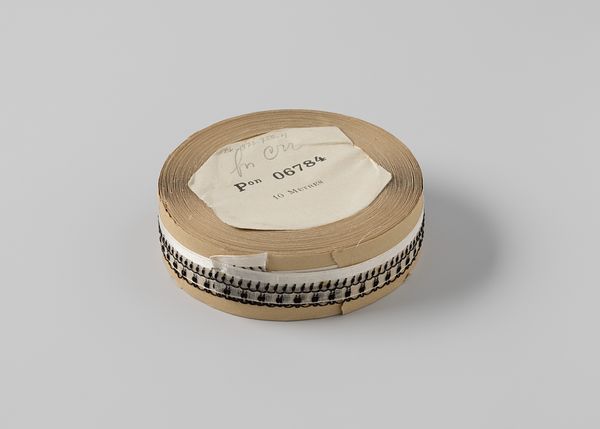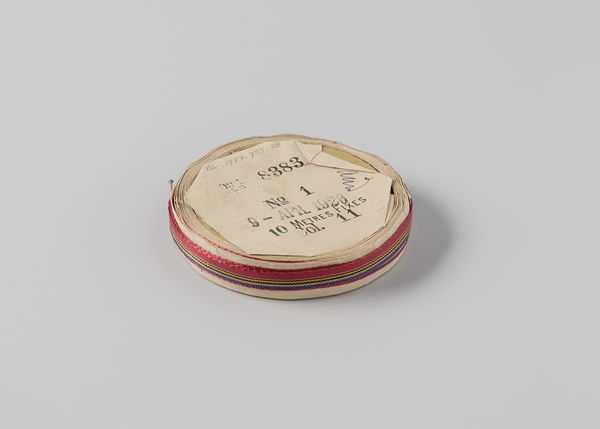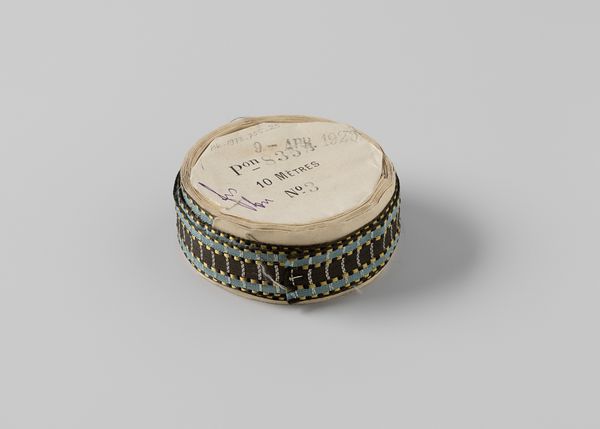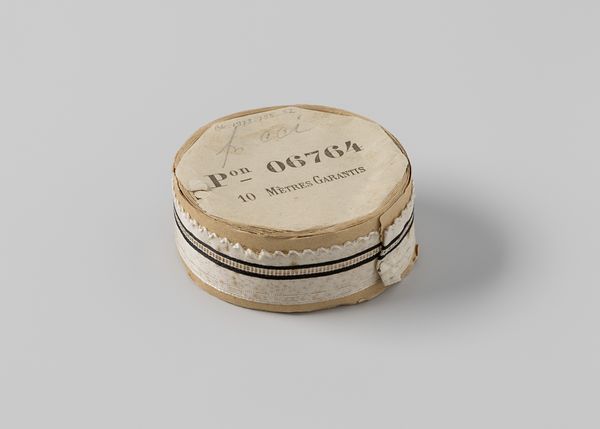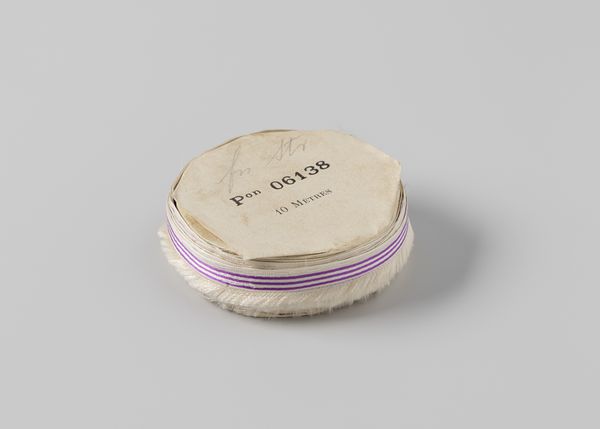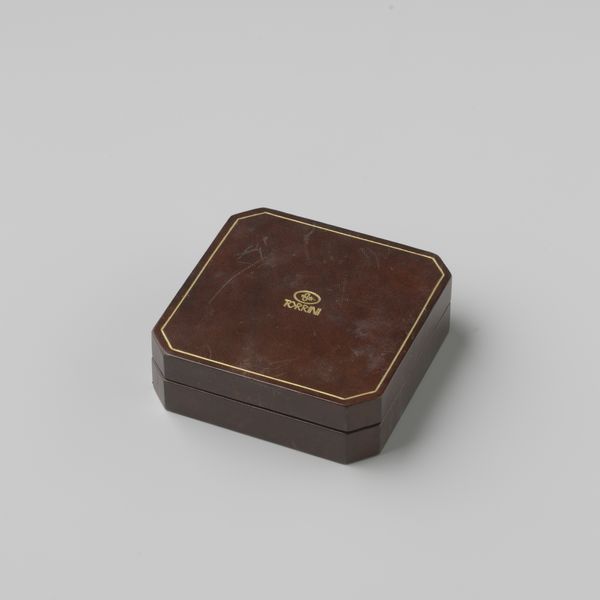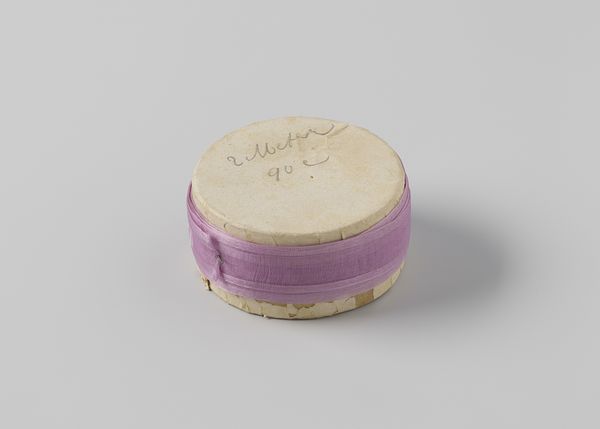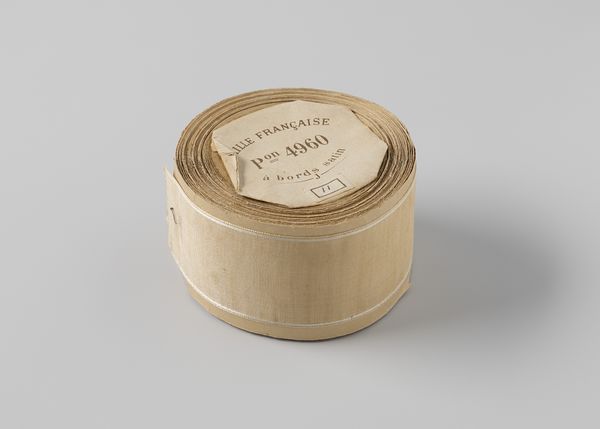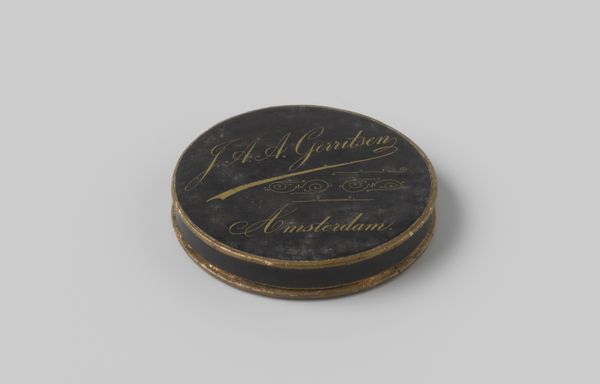
print, photography
#
still-life-photography
# print
#
photography
Dimensions: diameter 5.2 cm, depth 2.1 cm
Copyright: Rijks Museum: Open Domain
Curator: Let's take a closer look at this intriguing still life photograph from the 1880s titled "Doos behorend bij een kerkelijke Oostenrijkse penning", which translates to "Box belonging to an Ecclesiastical Austrian Medal". It is a print by Hermann Wittig. Editor: It strikes me immediately as understated and almost fragile. The muted blues and cream colours give it an air of quiet dignity, reminiscent of historical preservation. Curator: Indeed, I find the object fascinating within the context of Austrian clerical history. Consider the possible symbolism of the box. It’s not merely a container but a holder of meaning related to faith, likely containing a tangible piece connected to religious authority, and given the historical context of the late 19th century, understanding what that implies is vital. Editor: Precisely. A container like this carries weight. The round shape itself is significant across many cultures, representing wholeness and the eternal. Add to that the script along the edges, probably indicating provenance, and you create a sense of connection to both local industry and international ties. It feels significant to place a circle of faith in a vessel of commercial origin, an exercise in shared meaning. Curator: It raises interesting questions. Was it mass-produced, reflecting increasing accessibility to religious artifacts, or custom-made, a mark of prestige? And what about Wittig’s choice to photograph it? It's unlikely that such items of devotion were available or affordable for much of the population. The item could very well have served a class or imperialist function in its time. Editor: You make a vital point. I hadn't considered the photograph as a symbol in itself, preserving memory. Wittig created more than a picture of an object; he immortalised cultural values. The blue stripe, for example—is it mere decoration or a coded visual cue relating to faith or perhaps monarchy? Curator: An astute observation. Thinking intersectionally, one wonders about the absence of the medal itself and what is left in its wake. Did it become tarnished and forgotten with the rise of industry or new empires in the next century? What did progress claim and leave behind? Editor: Beautifully stated. We start with a humble box, and end up contemplating the vast interplay of religion, industry, class, and memory. It underscores the significance found in even the simplest of symbols.
Comments
No comments
Be the first to comment and join the conversation on the ultimate creative platform.
